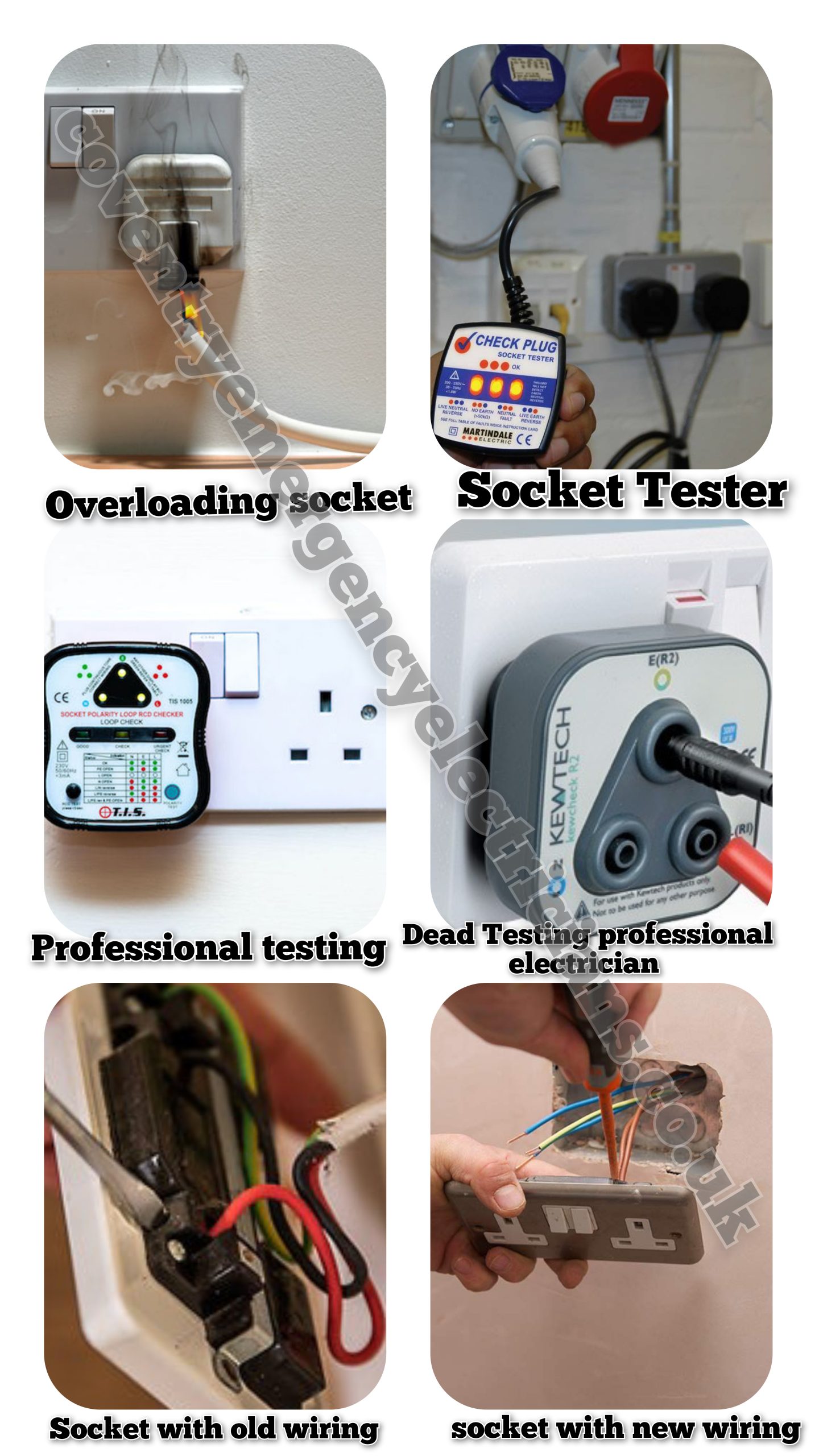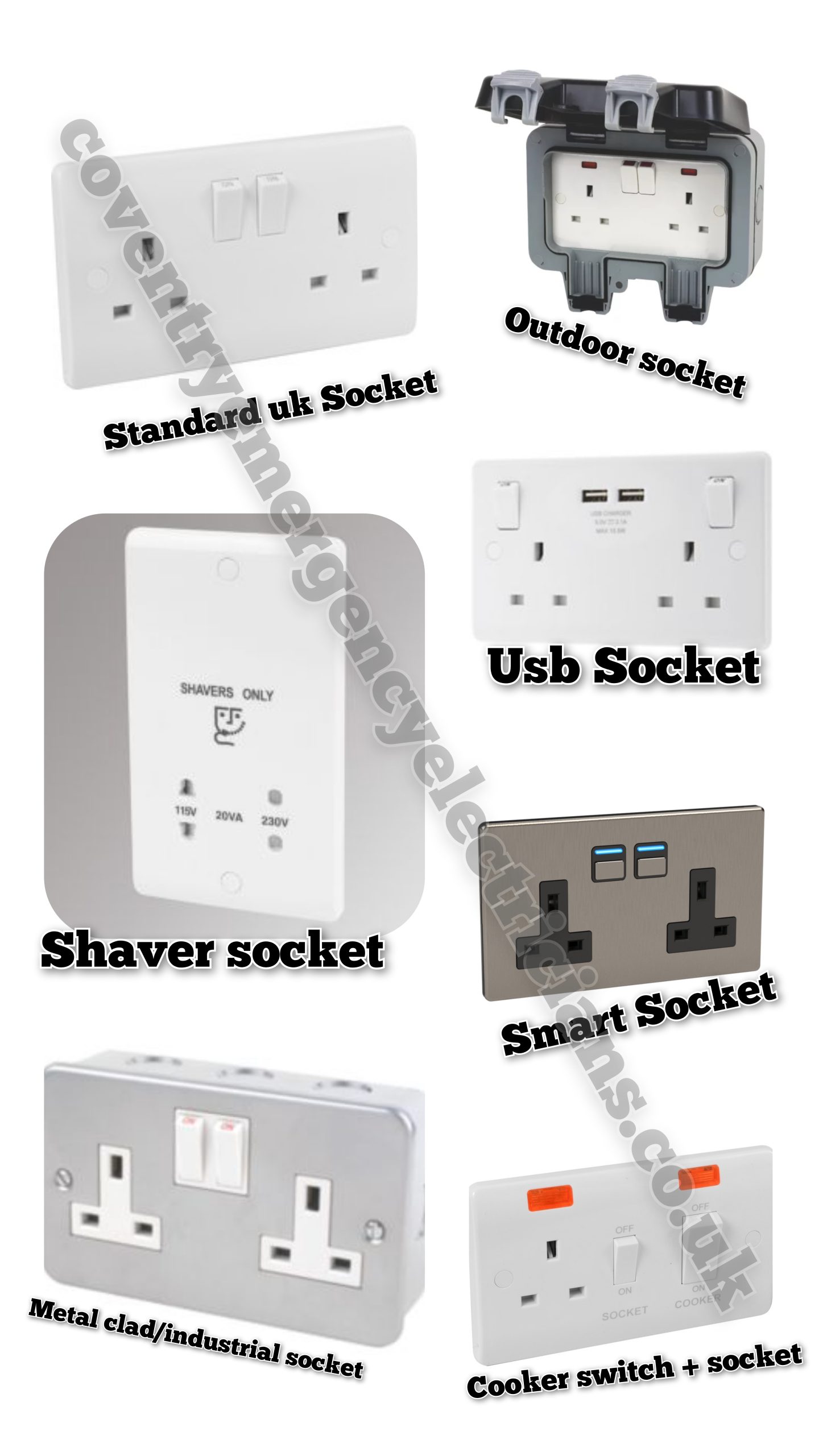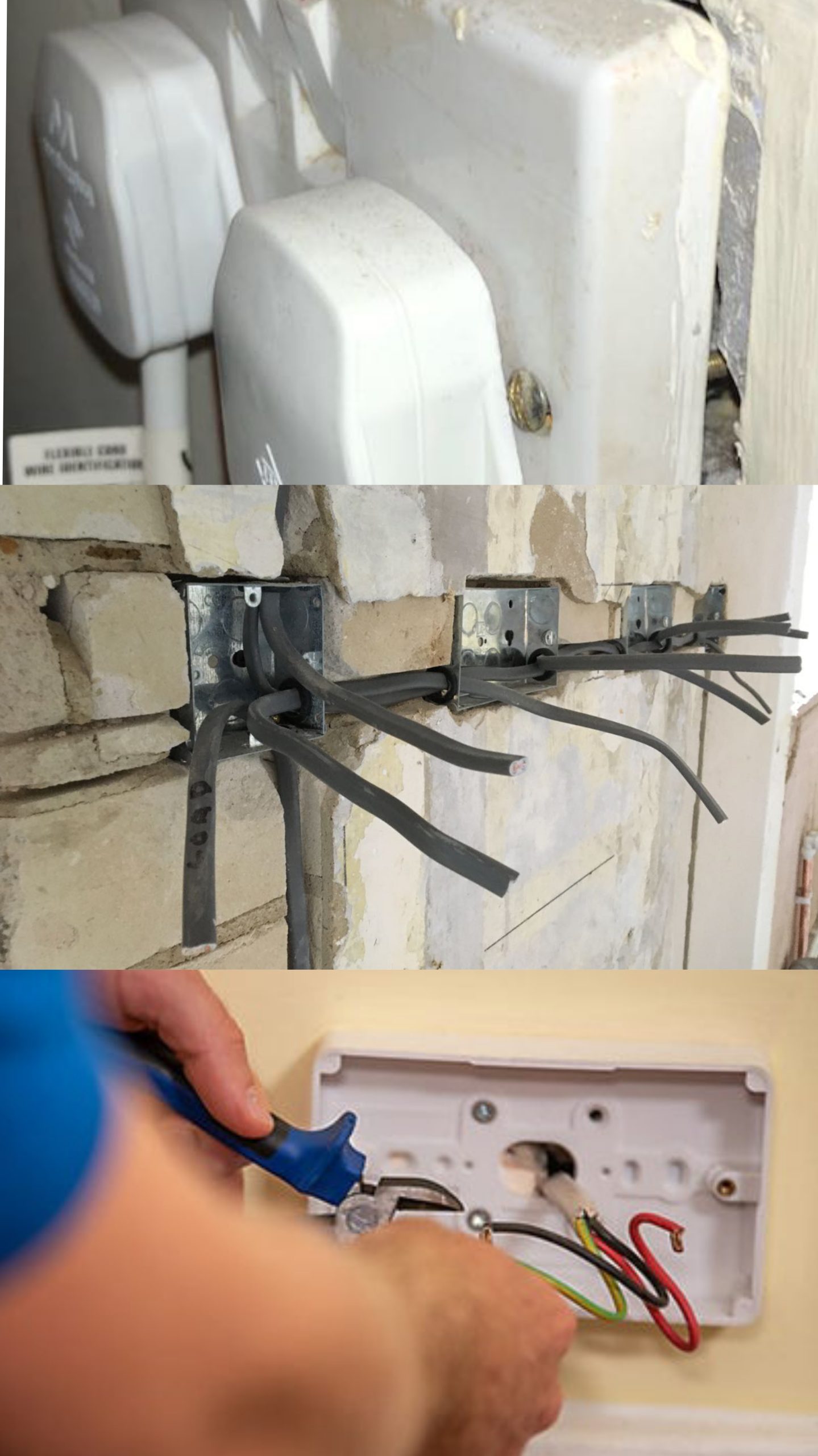Socket and Switches Inspections and Testing Services
If you need to have your sockets and switches inspected and tested, it is essential to hire a certified electrician for safety reasons. At coventry Electricians, we provide comprehensive testing and inspection services for all types of electrical installations. Our team of local electricians near you will conduct a thorough assessment to ensure that your sockets and switches are up to code and safe to use. Contact us today for a free, no-obligation quote and experience our affordable and reliable electrical services.
What does socket inspection and testing entail?
Socket inspections and testing involve checking the safety and proper functioning of electrical sockets in a building. A certified electrician typically performs this type of testing, which includes visual and physical examinations of the sockets and surrounding wiring.
During the inspection, the electrician will look for signs of damage, such as cracks, burns, or loose connections, and test the socket’s electrical current and earthing to ensure it is functioning correctly. They may also use specialized testing equipment to perform more in-depth analysis and identify any potential faults or hazards.
Socket inspections and testing are important for ensuring the safety of the building’s occupants, as faulty sockets can cause electrical shocks, fires, and other hazards. Additionally, regular inspections can help identify and prevent potential issues before they become more significant problems.

Do you need inspection and testing services for Socket and Switches?
What are the types of sockets in the UK
There are several types of sockets commonly used in the UK:
Standard UK 3-pin socket: This is the most common type of socket found in the UK, used for general domestic appliances and devices.
Shaver socket: This is a 2-pin socket found in bathrooms, designed for charging electric shavers and toothbrushes.
Cooker socket: This is a dedicated socket for electric cookers and ovens, with a higher current rating than standard sockets.
Industrial socket: These are larger sockets designed for industrial and heavy-duty applications, such as workshops and factories.
Outdoor socket: These sockets are weatherproof and designed for use outside, for powering garden equipment and outdoor lighting.

USB socket: These sockets have USB ports built in, allowing you to charge devices without the need for a separate charger.
Smart socket: These sockets can be controlled using a smartphone app, allowing you to turn them on and off remotely.
Note that there may be other specialized sockets available for specific uses, but the above are the most common types.
Do you need inspection and testing services for Socket and Switches?
What are some common problems and faults that can occur with UK sockets?
There are several common problems and faults that can occur with UK sockets, including:
Loose connections: Over time, the connections between the socket and the wiring can become loose, which can cause arcing and even a fire.
Overloading: Overloading the socket by plugging in too many devices at once can cause the socket to overheat and possibly cause a fire.
Burnt or melted socket: Overheating caused by overloading or loose connections can result in the socket becoming burnt or melted.
Tripping circuit breakers: If a circuit breaker keeps tripping, it could be a sign that the socket is faulty and needs to be replaced.
Switch failure: The switch on the socket can become faulty, making it difficult to turn on or off.

Damaged or worn insulation: Damage to the insulation surrounding the wiring can expose the wiring and create a safety hazard.
If you experience any of these problems with your UK sockets, it’s important to have them inspected and repaired or replaced by a qualified electrician.
Do you need inspection and testing services for Socket and Switches?
Can I replace the sockets in my home myself?
It is possible to replace a socket, but it is important to make sure that you have the necessary knowledge and skills to do so safely. If you are not confident in your ability to do the job safely, it is recommended that you hire a qualified electrician to replace the socket for you. In addition, any electrical work carried out in the UK must comply with the Building Regulations and must be certified, so it is important to keep this in mind when considering whether to replace a socket yourself.
Frequently Asked Question
The UK has several regulations governing electrical sockets in homes and buildings. Here are some of the key regulations:
BS 1363: This is the British Standard for 13A fused plugs, switched and unswitched socket outlets. All socket outlets in the UK must meet this standard.
Part P of the Building Regulations: Part P requires that all electrical installations in dwellings, including socket outlets, are designed, installed, inspected and tested to ensure they meet the relevant safety standards.
Minimum number of sockets: The UK Building Regulations require that there are an adequate number of sockets in each room, taking into account the size and intended use of the room.
Bathroom sockets: Sockets in bathrooms must be installed at least 3 meters from the bath or shower and should be operated by a pull cord or a switch outside the bathroom.
Kitchen sockets: All sockets in a kitchen must be protected by a residual current device (RCD) to prevent electrical shocks.
Socket heights: Socket outlets should be positioned at a height of between 450mm and 1200mm above floor level.
It’s important to follow these regulations when installing or replacing sockets in the UK to ensure the safety of the electrical installation.
The number of sockets required in a room depends on the room size and its intended use. In general, a typical room in a house should have at least two or three double sockets, while larger rooms or those with more appliances may require more.
For example, a living room might need at least four to six double sockets, depending on the layout and number of appliances, while a kitchen may require six to eight double sockets to accommodate various appliances like fridges, ovens, and microwaves.
It is recommended to consult with a qualified electrician to determine the specific socket requirements for each room, as they can assess the load requirements of each appliance and ensure that the electrical installation meets safety regulations.
The cost to install a new socket in the UK can vary depending on factors such as the location of the socket and the complexity of the installation. On average, homeowners can expect to pay between £100 and £200, which includes the cost of labour and materials. The price for single, double, and USB sockets is typically the same, but if the installation requires additional wiring or modifications to the electrical system, the cost may be higher. It’s always best to get a quote from a qualified electrician to get an accurate estimate for your specific situation.

